A Dutch technician who rolled into lettuce growing in Aruba a good 10 years ago without any horticultural experience has since supplied dozens of chefs there with frisée lettuce, Batavia, and oak leaf lettuce, and has gradually made the training of local youngsters in the AGF world his goal. We are talking about Frank Timmen, who runs the cultivation company Happyponics with Diego Acevedo. The island's food banks are also "happy" with Frank and Diego growing lettuce on water, as they regularly receive fresh heads as gifts. "In the beginning that was our overproduction, but now we even purposefully sow some for them. We think it's important to do something for the community." In 2014, they started with a 7-meter by 9-meter greenhouse. "Very small-scale. I had seen a documentary on TV about vertical farming. My wife had worked in Aruba, but when we came to live here and I had given up my job in the Netherlands, I didn't have anything to do right away. I did see something in hydroponics. I didn't know anything about plants, but hydroponics also involves a lot of technology, which I am familiar with," says Frank.
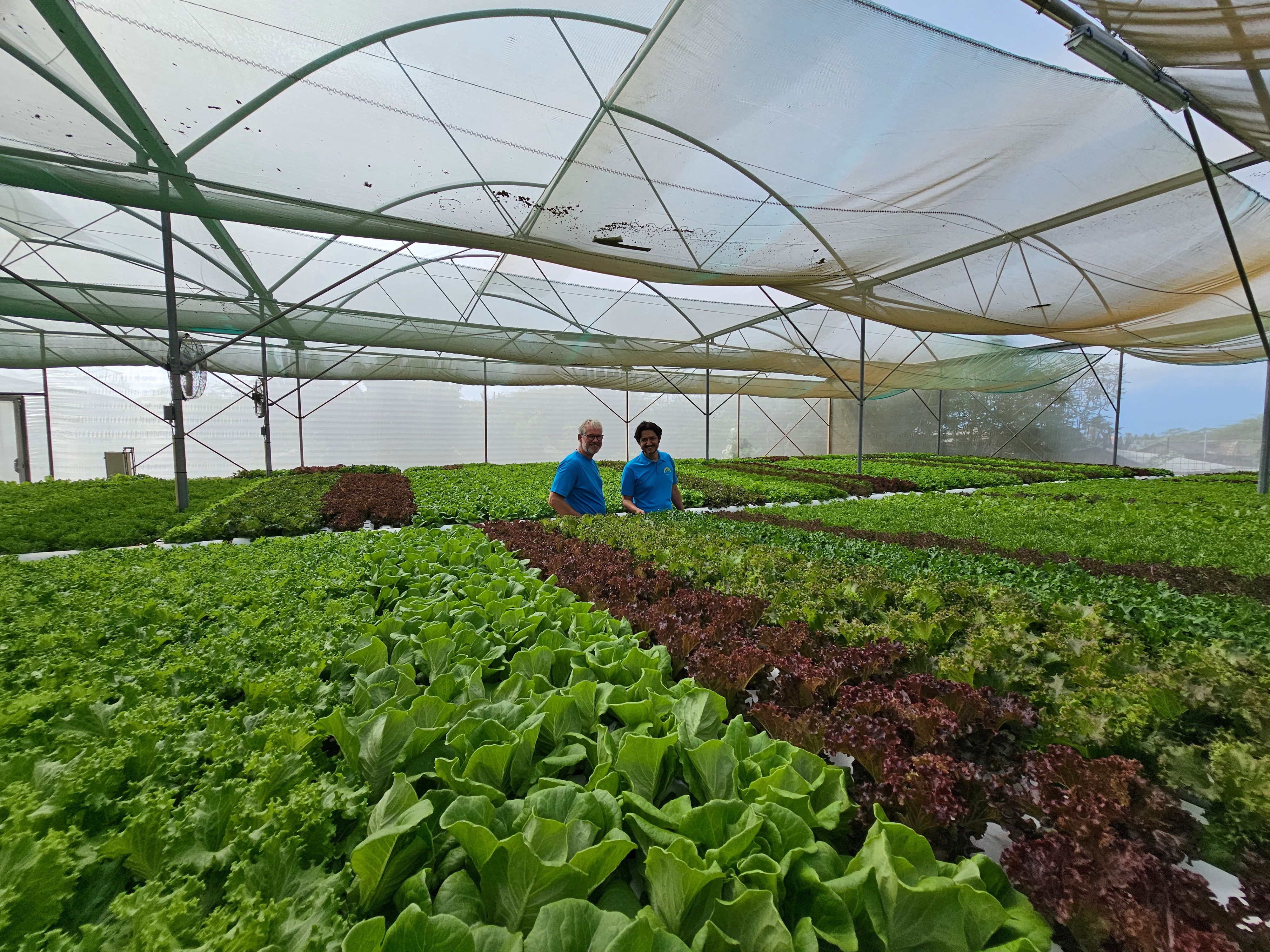
Frank and Diego grow various types of lettuce
Listening to the manager
A chef was immediately involved in the project, which started with growing about 200 heads of lettuce. "Of course, it makes no sense to just grow some lettuce and then see if you find sales. That chef told me which varieties the catering industry wanted and what the quality requirements were. For instance, here in the exclusive restaurants, lettuce is not infrequently used as a decorative element on the plate. For two years, I supplied lettuce to just seven customers. This small scale was a conscious choice, I wanted to grow towards perfection in quality and stability in delivery." Meanwhile, Frank and Diego have a Dutch-made greenhouse of 750 m2 in which 4,000 heads of lettuce are harvested per week. Building the greenhouse was quite an investment. As the bank would not grant a loan, crowdfunding was set up. "Friends and acquaintances helped us. After five years, they were all paid back."
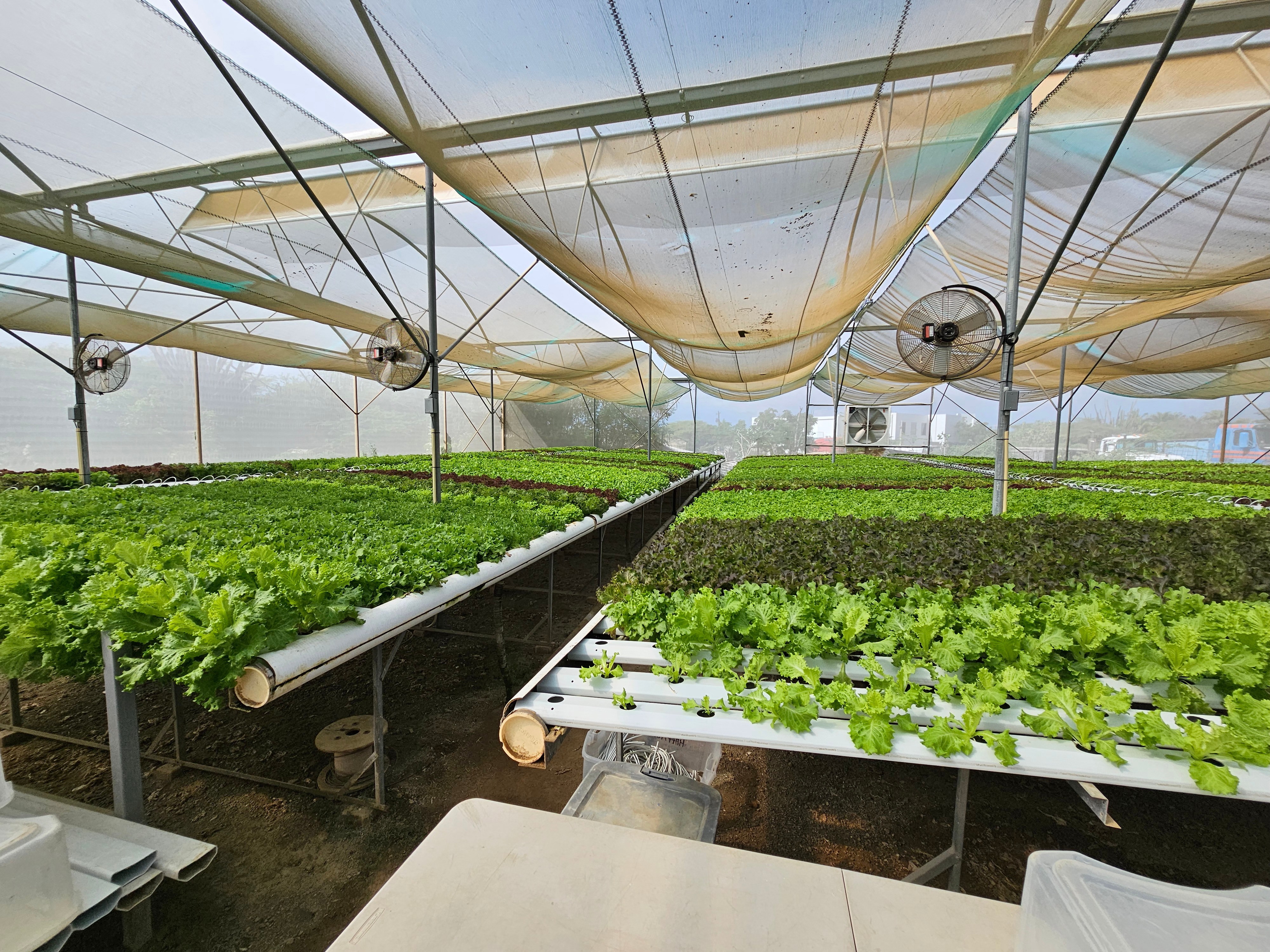
Chilled water flows through the gutter, requiring less cooling than with floating heads
A fixed price
"Our market is restaurants and hotels. We deliver the lettuce heads in crates. No plastic bags with us, we keep it as sustainable as possible. We drop off a crate and take back the empty one from the previous week to clean it and reuse it. A head of lettuce has a fixed price, no matter what variety. We are flexible with what we deliver in a crate. It can be one type of lettuce, or a mix. The customer decides. is clear and easy, for us and the customer," Frank explains. Besides specialties and high-end lettuces, Happyponics also grows some ordinary lettuces for the snack trucks. Iceberg lettuce and Romaine, on the other hand, are not found in Frank and Diego's greenhouse. "Here on the island, it is difficult to get the quality of these two varieties perfect. We haven't found the right growing method yet."
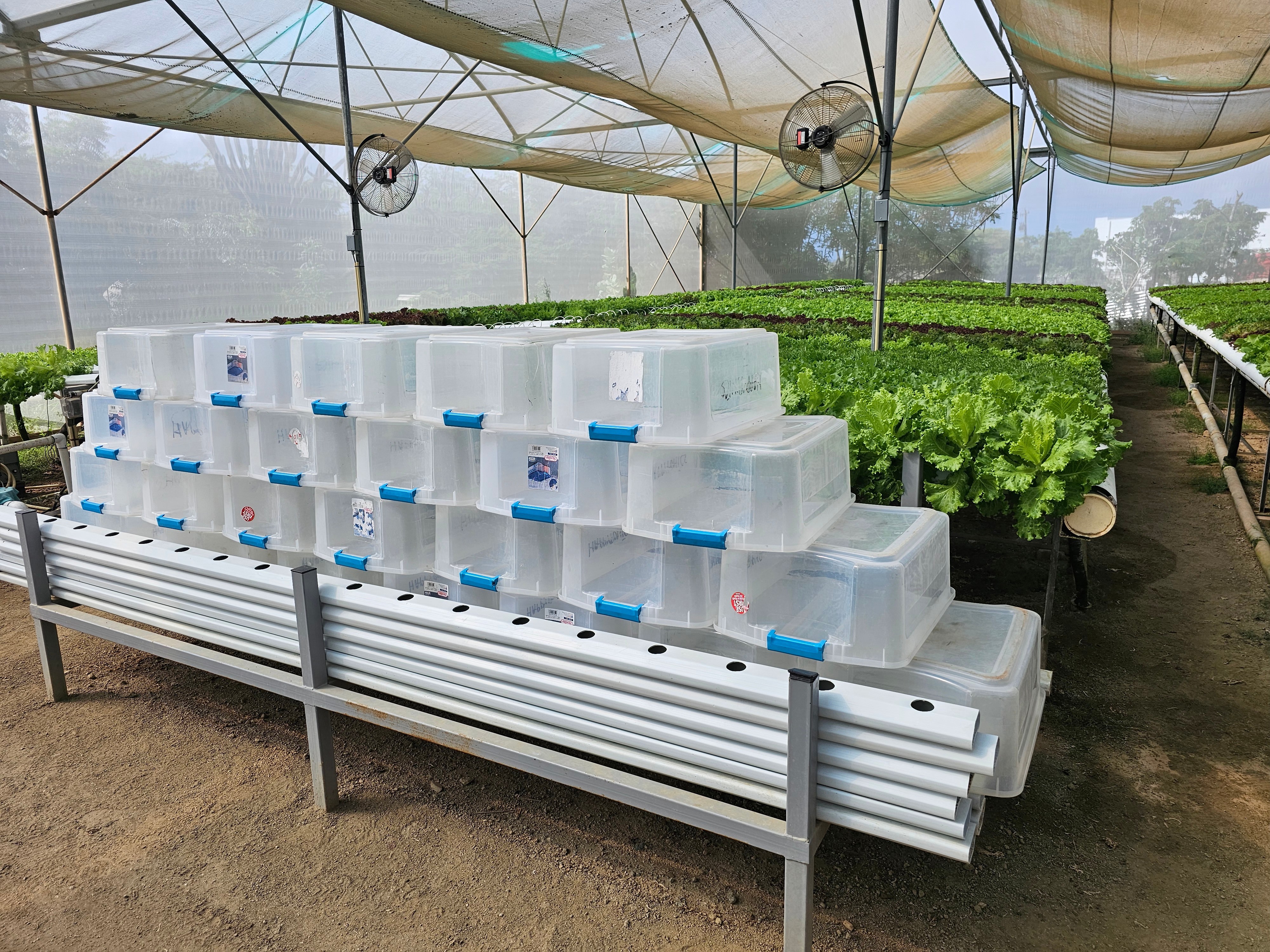
Every customer receives his lettuce in these crates
15% loss on import product
Scaling up cultivation also allowed Happyponics to supply larger customers in the catering industry, though with minute quantities for the hotels and resorts. "They imported the bulk, of course. 98% of the food in Aruba is imported. But because they were very satisfied with our quality, the orders became increasingly large." The reason is that once the imported product arrives on the island, it has a shelf life of three days at most. "With imported lettuce, I once heard, you have to count on a 15% loss anyway. We deliver the lettuce with the root system and it keeps for another two weeks in the customer's refrigerator. So the advantages of locally grown leafy vegetables are that they are a fresher product with a longer shelf life and less waste. Surely, you can see a change in mentality among customers and consumers over the past few years, whereby local products are preferred over imports, especially if the price is also OK."
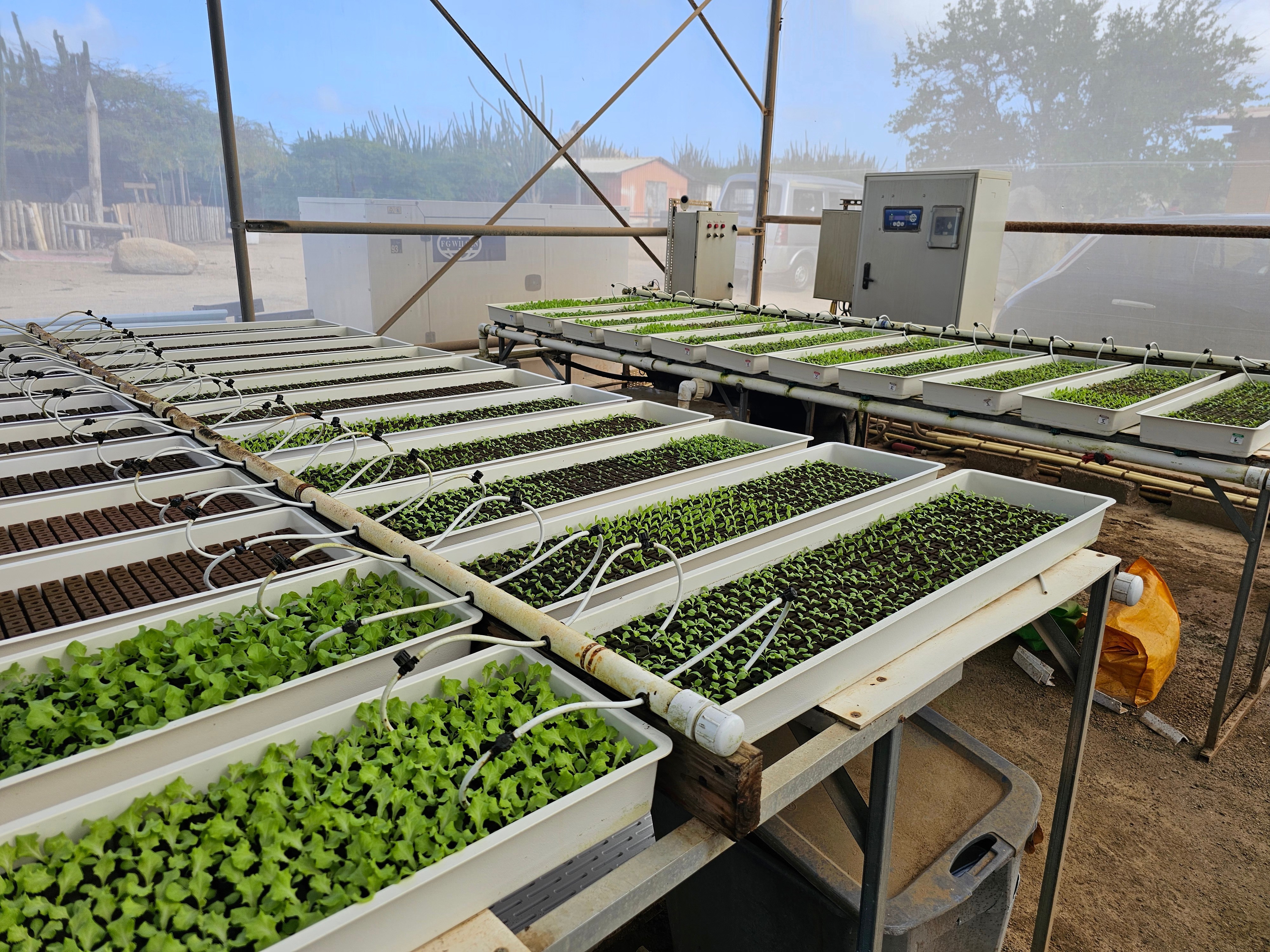
Propagation
Food banks
Local is more sustainable, which is an immediate focus at Happyponics. "No refrigeration at our greenhouse, the wind blowing through the mesh does that. We also grow on demand, to avoid overproduction and therefore waste. If we have some heads left over, we give them to the food banks and lately, we even dare to schedule some extra products, especially for them. After all, I recently heard that they never get fresh products... You might not immediately expect it, but there are quite a lot of poor people in Aruba," Frank says.
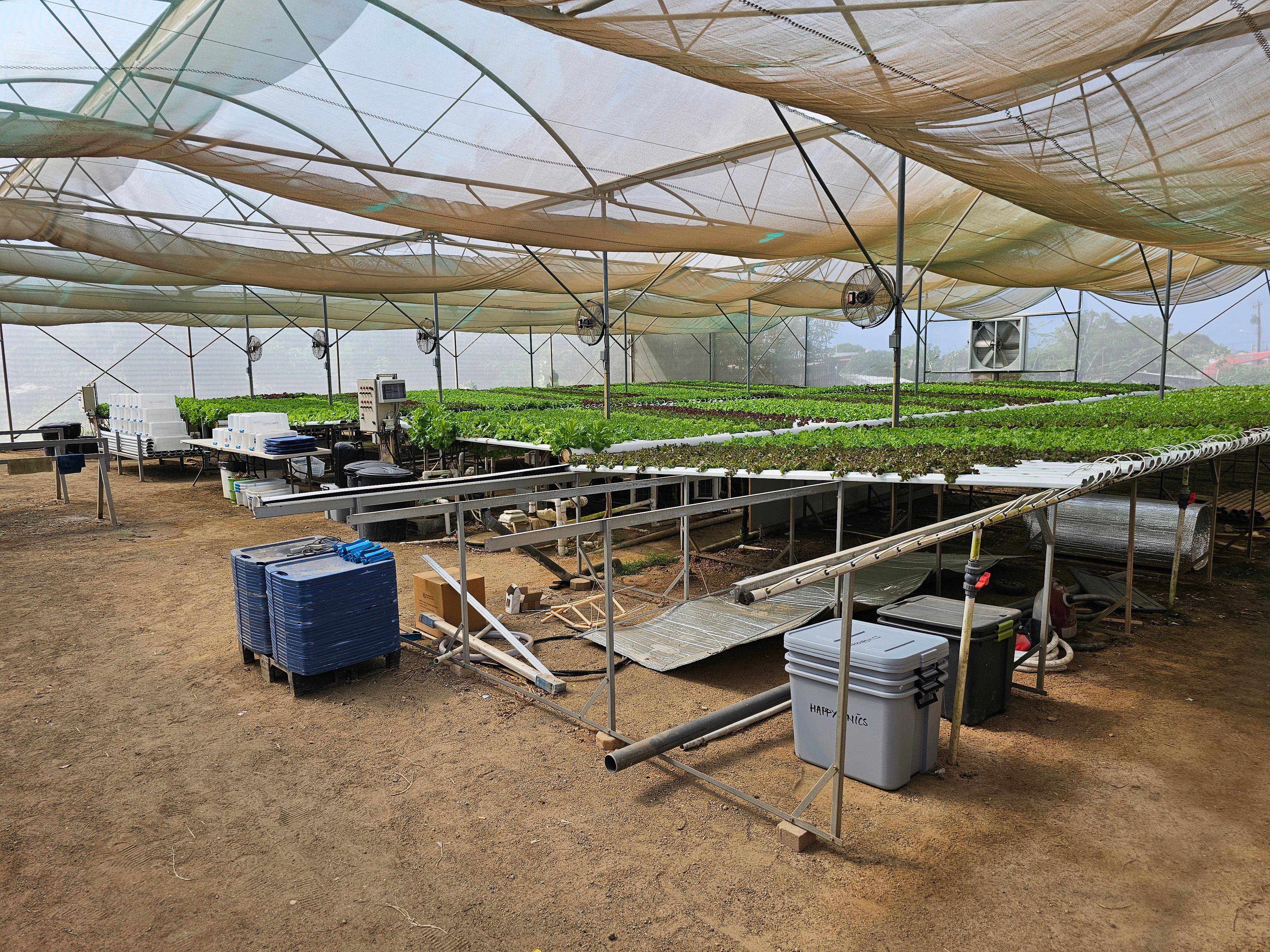
Efficiency
The air is not cooled, but the water that runs through the gutters and supplies the lettuce with moisture and food has to be cooled back to a temperature below 25 degrees. "Underground is an insulated water tank with a capacity of 3,000 liters, although it is actually only half full. Because there is really only a film of water flowing through the gutters, we don't need large volumes. The water is continuously cooled and also reused," Diego adds. So the biggest cost is not water, Frank explains, but energy for cooling. "Electricity is expensive and solar panels are not an option for us. We can't put them on the deck of the greenhouse, can we? Then no more sunlight would come in. And buying additional land is not possible at this location either." Reducing energy costs must consequently come from efficiency improvements. "Working smarter, that's what it comes down to. We managed to do that by installing new pumps: instead of single speed we now have variable speed pumps."
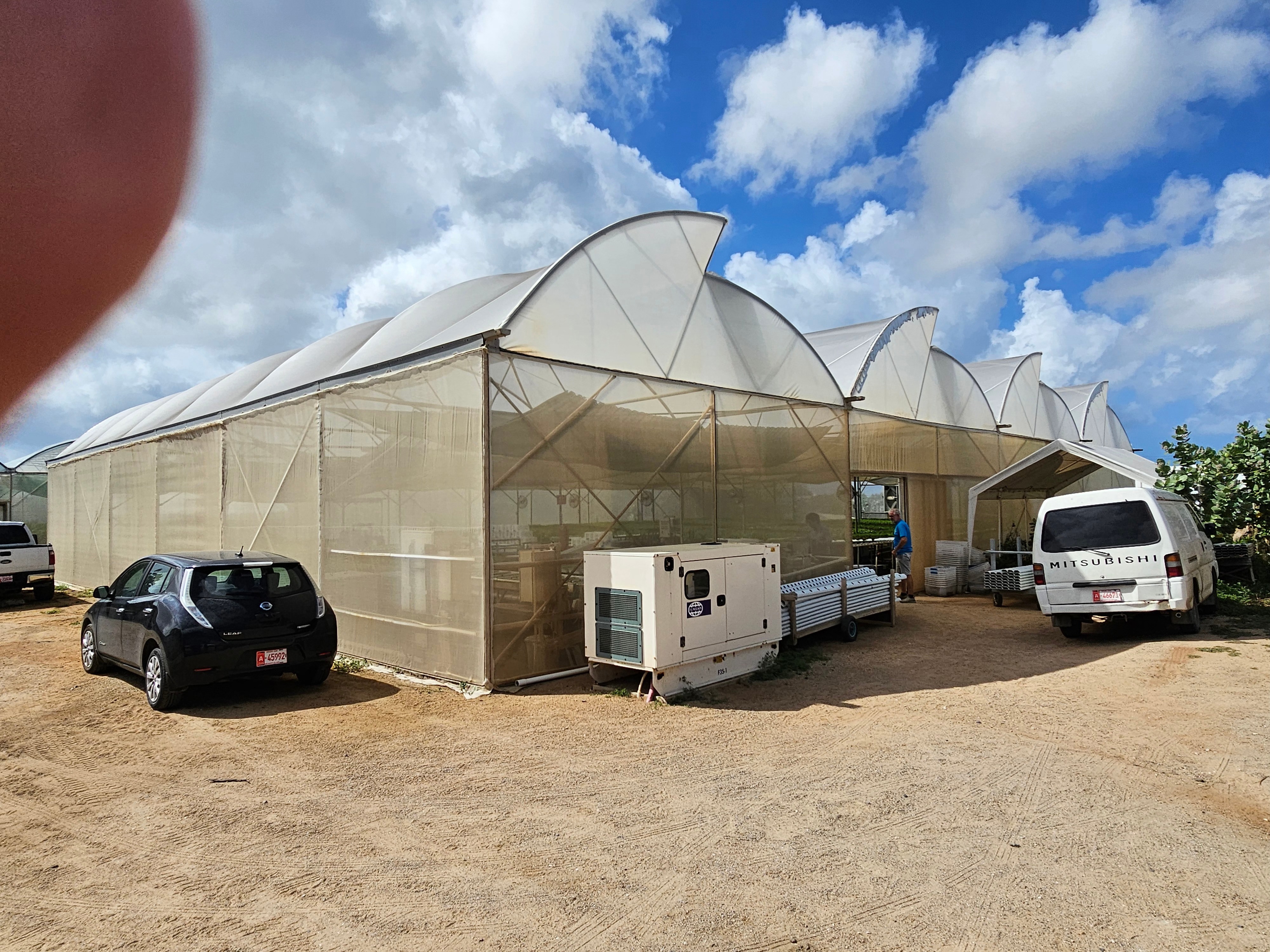
The greenhouse with an extension behind it
Bright sun
While solar panels on the deck would keep out all sunlight, it is still necessary to filter out some of Aruba's overly bright radiation. "We do that with shade cloths. In fact, the sunlight is so strong that we have to replace all the plastic and netting every four years. It just cracks and we can't afford that, because you have to keep the greenhouse nicely closed to keep the insects out. In that respect, we've really only had one issue and that's thrips. We are really on top of this and we managed to keep this problem under control," says Diego. For now, only lettuces are growing in Frank and Diego's greenhouse, although herbs may be added soon. "We have already done tests and the great thing about herbs is that you don't have to refrigerate them. We are thinking about basil anyway, there is demand for that. But also arugula and coriander. It would be nice to be able to start with those three crops. They are the most profitable products. Later, cultivation could then possibly be expanded with all kinds of other nice herbs. I am sure there is a market when you see what is paid here for a small bag of fresh herbs from the US, the Netherlands, or Colombia," Frank indicates.
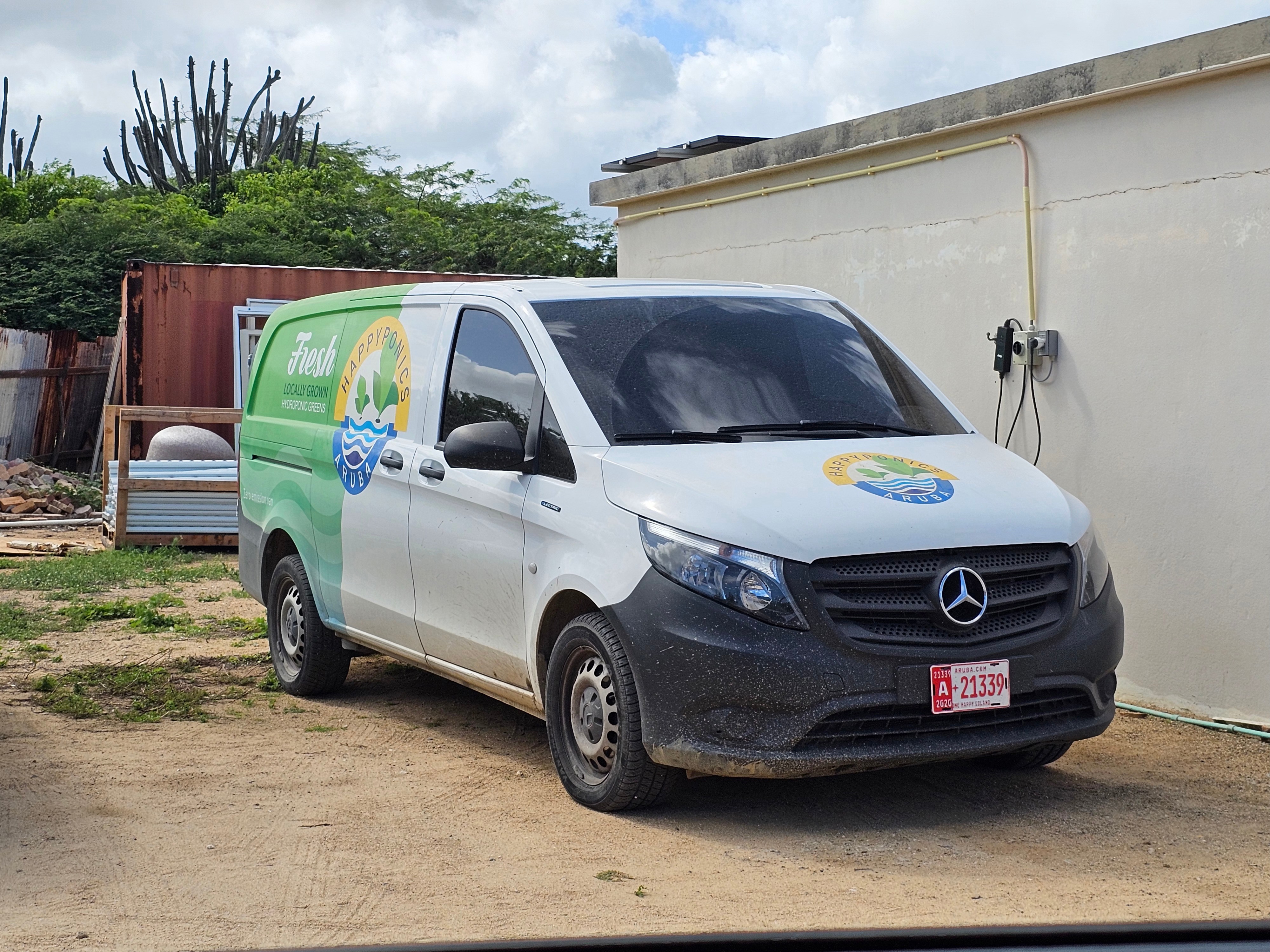
Own delivery service
Giving young people opportunities
To say that the AGF sector in Aruba is still underdeveloped is an understatement. "There are so many opportunities here. That's why I also like to let young people work in the greenhouse, in the hope that they become passionate about plants and later take the step to grow vegetables or fruit themselves, preferably also on a commercial basis. We do not fear competition, at least not in the next few years. After all, there is no tradition of horticulture here, and certainly not hydroponics, which given the climate and soil conditions on the island is the most appropriate system for growing lettuce and herbs, as well as fruiting vegetables. For instance, a neighbor boy who works in our greenhouse has conceived the plan to grow tomatoes. Many will say this is impossible in Aruba, but they used to say the same about lettuce...," concludes Frank.
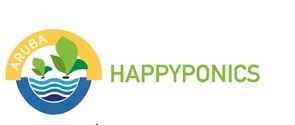
For more information:Frank TimmenDiego AcevedoHappyponics Paradera 159 (Aruba)Tel: + 297 699 3794[email protected]
http://www.happyponics.aw FreshPublishers © 2005-2025 FreshPlaza.com